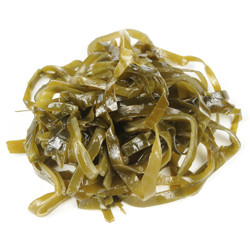Biofuel from seaweed
Natural production of seaweed is approximately 1 tonne dry weight per hectare per year, which is much greater than for many terrestrial plants. Large amounts of seaweed, particularly kelp, are washed up on Europe's beaches every winter and can provide a renewable source of biofuel. The 'Anaerobic digestion of seaweed for biofuels' (SEAWEED AD) project examined the viability of using seaweed as an alternative to fossil fuels. The most cost-effective way to achieve this was the use of anaerobic digestion (AD) — which is conducted without the presence of oxygen — to produce methane gas. The work was conducted at the laboratory scale, but it is hoped that in the near future the AD process will be tested at the pilot scale. Project partners developed fermentation technologies and detoxification processes, and employed metagenomic techniques to develop the most suitable microbial inoculums. These were used to produce methane biofuel from the AD of seaweeds. In addition, bioactive compounds released by the process were studied for additional value as pharmaceutical products or use in cosmetics. Researchers identified the hydrolysis of seaweed polysaccharides as the limiting factor in the AD process. Inoculums comprising polysaccharide-hydrolysing bacteria and methane-producing archaea were found to increase methane productivity. The sources of the microorganisms were ruminants, digester leachate and marine mud. One challenge was the presence of phlorotannins (PTs), which were found in some species of seaweed and that cause toxicity. The PTs were neutralised through extraction and precipitation techniques. Extracted PT was found to be bioactive, displaying radical scavenging activity. SEAWEED AD demonstrated that an optimised inoculum can be used to produce biomethane and bioactive products from seaweed. This will help to protect the European environment, while contributing to economic success through the development of new biotechnology.
Keywords
Biofuel, seaweed, fossil fuel, anaerobic digestion, inoculum, phlorotannin, biomethane



